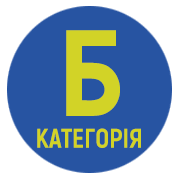Direct Democracy During Martial Law: Ways to Realize the People’s Right to Power
DOI:
https://doi.org/10.35774/app2022.02.013Keywords:
direct democracy, democracy, popular sovereignty, martial law, e-democracyAbstract
The article is devoted to the analysis of the problem of realization of democracy in the conditions of martial law. It has been established that direct democracy is an important element in the implementation of the principle of people's sovereignty. This principle is not limited. Protection of people's sovereignty is an important component of the state's defense function.
It was established that the restriction of human and civil rights, as well as the redistribution of powers between public authorities and local governments, aimed at ensuring defense capability and bringing victory closer. Not all current issues that need to involve citizens are related to solving such problems. Therefore, the author concludes that the limited use of direct democracy during martial law is quite appropriate.
The author substantiates the need for a moderate approach to restricting the right of citizens to directly exercise power. The search for possible forms and manifestations of direct democracy, which could ensure the implementation of the real will of citizens, regardless of the martial law. The author considers the institution of direct electronic democracy to be the most successful for this. Its implementation is possible at least at the local level in the regions, where it is possible to ensure the verification of citizens and further rule-making process by the representative authorities. It is proposed to start comprehensive work on studying the possibility of creating blockchain platforms for direct e-democracy.
References
Shcherbanyuk O.V. (2013) Narodnyi suverenitet i realizatsiia vladospromozhnosti demokratychnoi derzhavy [People's sovereignty and the realization of the power of a democratic state]: monograph. Retrieved from https://ccu.gov.ua/sites/default/files/library/shcherbanyuk_o.v._narodnyy_suverpnytet.pdf [in Ukrainian].
Bulmer, E. (2013). Direct Democracy: International IDEA Constitution-Building Primer 3. Stockholm (Sweden), 2017. 33 p. Retrieved from https://www.idea.int/sites/default/files/publications/direct-democracy-primer.pdf]
Stavniychuk, M. (2000). Formy bezposerednoi demokratii. Konstytutsiine pravo Ukrainy: pidruchnyk, 2nd Ed. V.F. Pogorilka. Kyiv: Nauk. Dumka, 286–342 [in Ukrainian].
Altman, D. (2011) Direct Democracy Worldwide. Retrieved from https://www.researchgate.net/publication/288427223_Direct_Democracy_Worldwide https://doi.org/10.1017/CBO9780511933950
Melnik R.I., Chubko T.P. (2006). Problemy obmezhennia prav i svobod liudyny v umovakh dii spetsialnoho pravovoho rezhymu. [Problems of restriction of human rights and freedoms in the conditions of special legal regime]. Visnyk Luhanskoho derzhavnoho universytetu vnutrishnikh sprav imeni E.O. Didorenka – Bulletin of Luhansk State University of Internal Affairs named after E.O. Didorenko, 1, 125-134 [in Ukrainian].
Dotrymannia pryntsypiv demokratii, prav liudyny ta verkhovenstva prava v umovakh nadzvychainoho stanu – mirkuvannia. [Adherence to the principles of democracy, human rights and the rule of law in a state of emergency – reasoning] (2020). Yevropeiska komisiia za demokratiiu cherez pravo. Retrieved from https://www.venice.coe.int/webforms/documents/default.aspx?pdffile=CDL-AD(2020)014-ukr [in Ukrainian].
On e-democracy in the European Union: potential and challenges (2016/2008(INI)): report: 16.2.2017. European Parlament: official web-site. Retrieved from http://www.europarl.europa.eu/sides/getDoc.do?pubRef=-//EP//TEXT+REPORT+A8-2017-0041+0+DOC+XML+V0//EN [in Ukrainian].
Rogers, D. (2016). Monitory Democracy as Citizen-driven Participatory Planning: The Urban Politics of Redwatch in Sydney. Urban Policy and Research, 34, 3. Retrieved from https://doi.org/10.1080/08111146.2015.1077804
Crosby, M., Nachiappan, Pattanayak, P., Verma, S., Kalyanaraman V. (2015). BlockChain Technology. Sutardja Center for Entrepreneurship & Technology Technical Report. Retrieved from http://scet.berkeley.edu/wp-content/uploads/BlockchainPaper.pdf




